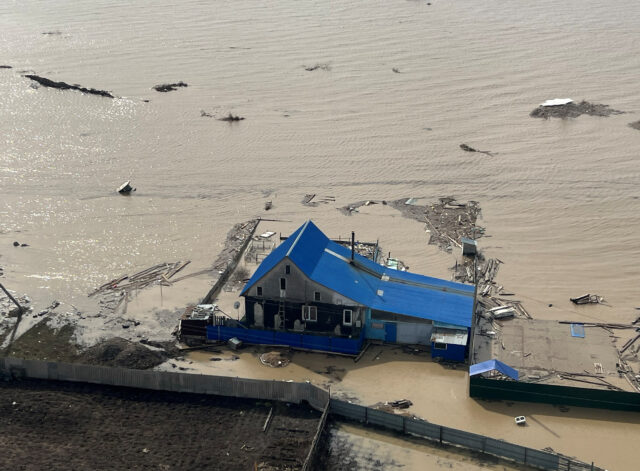Kazakhstan is on high alert as the Ural River is expected to surge, posing a serious threat to two western regions and crucial oil infrastructure. Concurrently, Russia is dealing with significant flooding near Siberia.
These floods, described as the most severe in decades for both nations, have necessitated the evacuation of tens of thousands of people.
In Kazakhstan, efforts to mitigate the flood’s impact include constructing a 7-km barrier along the Ural River in Yanvartsevo, a village in the West Kazakhstan region close to the Russian border.
This barrier is aimed at safeguarding the regional hub of Oral. The Ural River, which traverses through West Kazakhstan and Atyrau regions before flowing into the Caspian Sea, is critical as it is also the route for the Caspian Pipeline Consortium (CPC) pipeline. This pipeline is responsible for transporting 80% of Kazakhstan’s crucial oil exports.
Residents of Atyrau are taking measures into their own hands by either evacuating or fortifying their homes with sandbags and plastic barriers. KazTransOil, the state oil pipeline company, is constructing protective embankments at its facilities, including the Atyrau-Samara pipeline that transports crude oil to Germany’s Schwedt refinery via Russia.
In Russia, the situation is also dire. The authorities in Siberia’s Tyumen region have urgently called for the evacuation of five villages along the Ishim River, advising residents to take only essential items such as documents, medicines, and bedding.
In the city of Kurgan, record-breaking water levels in the Tobol River have led to widespread flooding, particularly affecting the city’s right bank. The regional governor, Vadim Shumkov, reported on Telegram that over 15,000 residents in the Kurgan region have been evacuated, according to the TASS news agency.
With Inputs From Reuters





